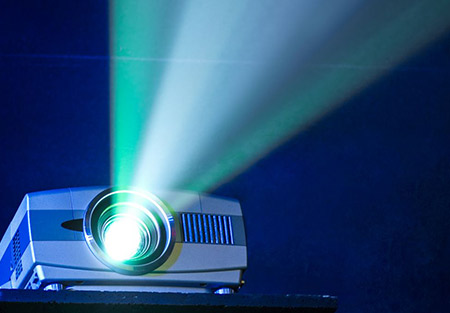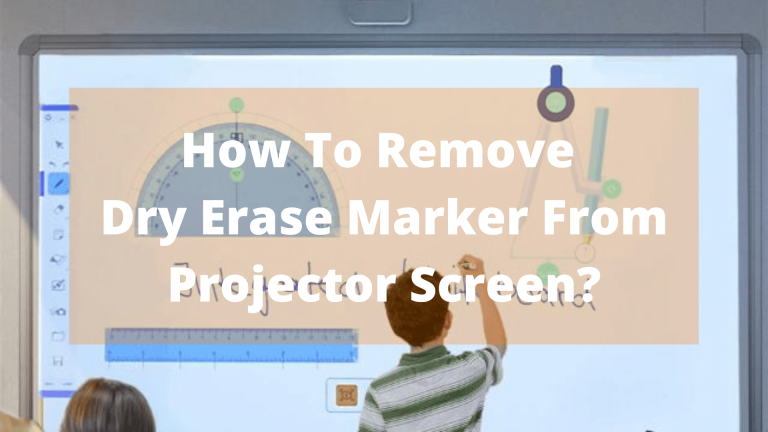Do I Need A Special Screen For Rear Projection? In July 26, 2024
Rear projection TVs have been around for a while and offer a great picture. But what about the screens? Do you need a unique screen for rear projection TVs? The answer is: it depends.
If you have a specific TV model in mind, it’s best to check with the manufacturer to see if they recommend a particular type of screen.
Otherwise, there are a few things to keep in mind. First, the screen should be flat. Second, it should be white or light-colored. And third, it should be matte, not glossy. These three factors will help you get the best picture possible from your rear projection TV.

Do I need a special screen for rear projection?
Rear projection screens allow light to pass through them, making them ideal for use with rear projection TVs. These screens are typically made of a semi-transparent material, allowing light to pass through while still providing a surface on which the image can be projected.
There are a variety of rear projection screens available on the market, so it is essential to choose one that is compatible with your rear projection TV.
What Projection Is Right For You?
There is no one-size-fits-all projection. The best projection for a given map depends on the map’s purpose, the region being mapped, the scale of the map, and the user’s preferences.
Some standard map projections include: – The Mercator projection is often used for world maps because it preserves the shapes of countries. However, it distorts the size of countries near the poles. – The conic projection is good for maps of countries in the northern or southern hemisphere.
It preserves the sizes of countries but distorts their shapes. – The cylindrical projection is good for world maps or maps of large countries. It keeps the sizes of countries but, again, distorts.
What projector can I use for rear projection?

There are a few different types of projectors that can be used for rear projection. The most common type is a projector with a short-throw lens. This type of projector is designed to be placed close to the screen, making it ideal for rear projection applications.
Another type of projector that can be used for rear projection is an ultra-short throw projector. These projectors are designed to be placed even closer to the screen, which makes them ideal for rear projection applications where space is limited.
Can you use a rear-projection screen for the front projection?
It is possible to use a rear-projection screen for front projection, although not all rear projection screens are designed for this purpose.
Rear projection screens are typically designed to reflect light from a projector behind the screen, while front projection screens allow light from a projector set in front of the screen to pass through.
However, some rear projection screens are made of materials that allow light to pass through from the front and the back, making them suitable for use with either front or rear projection setups.
Are all projectors capable of rear projection?

No, all projectors are not capable of rear projection. While all projectors can reverse/flip the image, not all are designed to be used on a rear projection surface.
Rear projection surfaces require a particular type of projector designed to project an image onto a screen from the back rather than the front. This type of projector is typically more expensive than a standard projector and may not be available in all sizes and resolutions.
How does ambient light affect front and rear projection screens?
The human eye is susceptible to changes in light levels, and this is especially true when it comes to moving images. When you are watching a movie on a projection screen, the ambient light in the room can significantly impact how clear and bright the photos appear.
In general, higher ambient light levels will degrade the perceived brightness of both front and rear projection screens. This is because the human eye constantly adjusts to changes in light levels, and when there is more light in the room, the eye will automatically adjust its sensitivity accordingly.
This means that when you are watching a movie in a room with high ambient light levels, the images on the screen will appear dimmer than in a lower chamber.
How much space do I need for rear projection?

The amount of space you will need for the rear projection will depend on the screen width you are using. A general rule of thumb is that you will need at least roughly the same amount of space as the width of your screen.
This is because the projector needs to project the image onto the screen evenly, and if there is not enough space, the picture may appear distorted or fuzzy.
Is Front or Rear Projection Better?
When choosing between a front or rear projection setup, there are a few things to consider. In most cases, a front projection will offer better visuals. However, a rear-projection format may be better if you have enough space.
Rear projection screens are typically more significant than the front, so a rear-projection design may be better if you have a large room or area to work with. Rear projection also offers a broader viewing angle than front projection, so more people can comfortably watch the screen.
On the downside, rear projection screens can be more challenging to set up than front projection screens. And because the projector is located behind the screen, rear projection setups can be more susceptible to ambient.
What’s the Best Material for a Rear Projection Screen?
A few things to consider when deciding on the best material for a rear projection screen. The first is the level of ambient light in the room. If the room is relatively dark, a blackout cloth or an actual projector screen will work well.
If there is a lot of ambient light, then a whiteboard or a piece of poster board will work better. The second thing to consider is the size of the screen.
If the screen is small, a blackout cloth or an actual projector screen will work well. If the screen is large, then a whiteboard or a piece of poster board will work better. The third thing to consider is the quality of the image.
Conclusion
If you have a home theater system and are looking for a great way to complete the setup, you may wonder if you need a special screen for rear projection. The answer is no – any white surface will do just fine. However, a few things to keep in mind if you want to get the most out of your rear-projection setup.
- First, ensure that the surface you’re projecting onto is as flat and smooth as possible.
- Second, if you can, try to project onto a white surface – this will help to improve the image quality.
- And finally, if you’re looking for the best possible image quality, you may want to invest in a unique rear projection screen.







